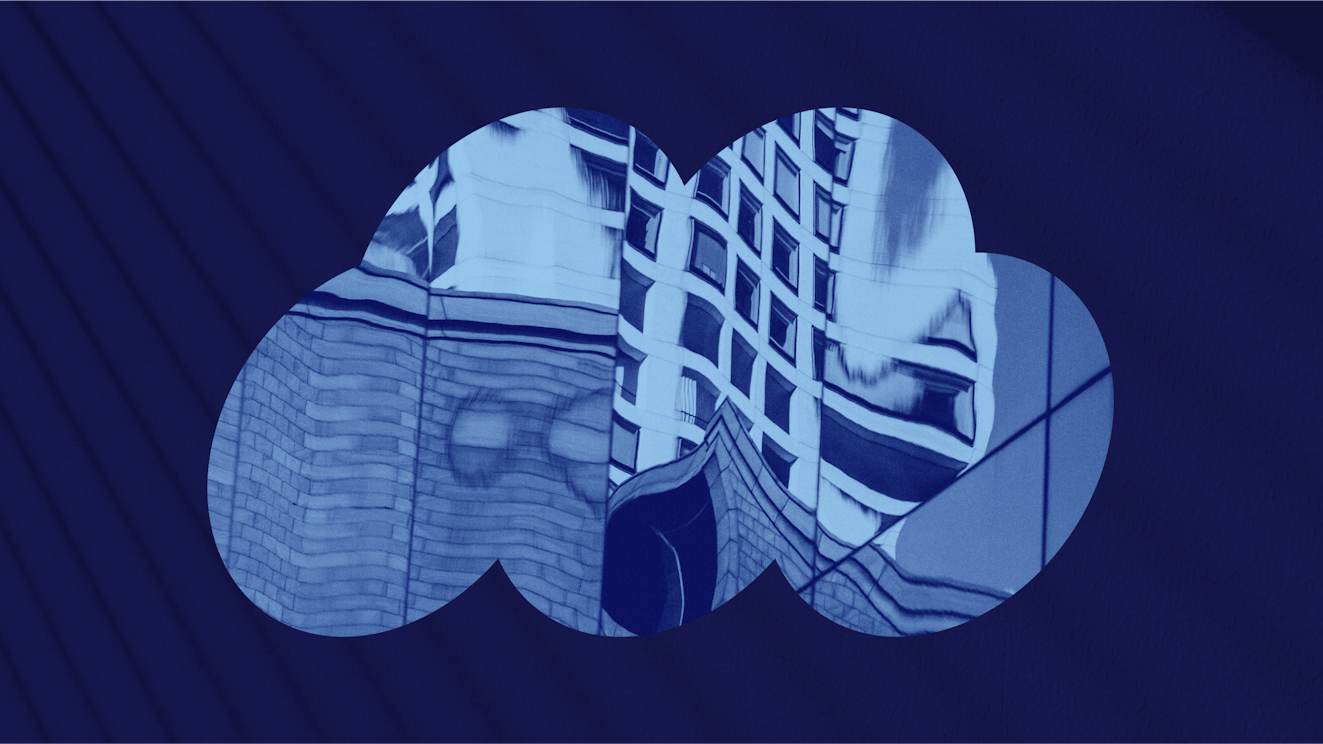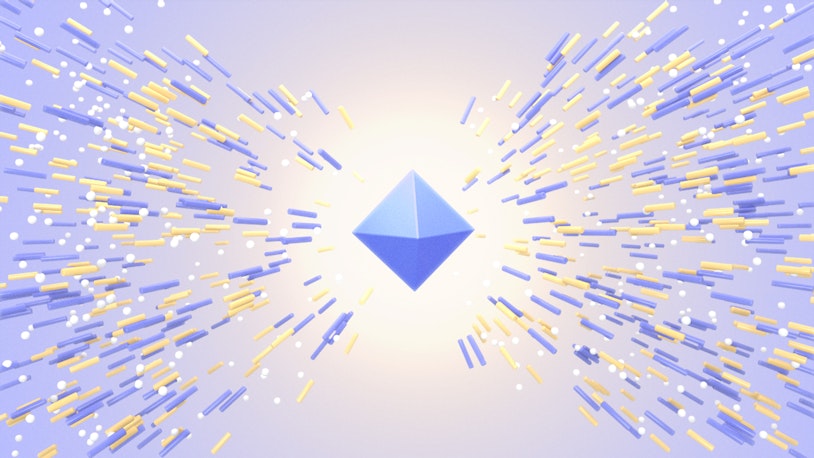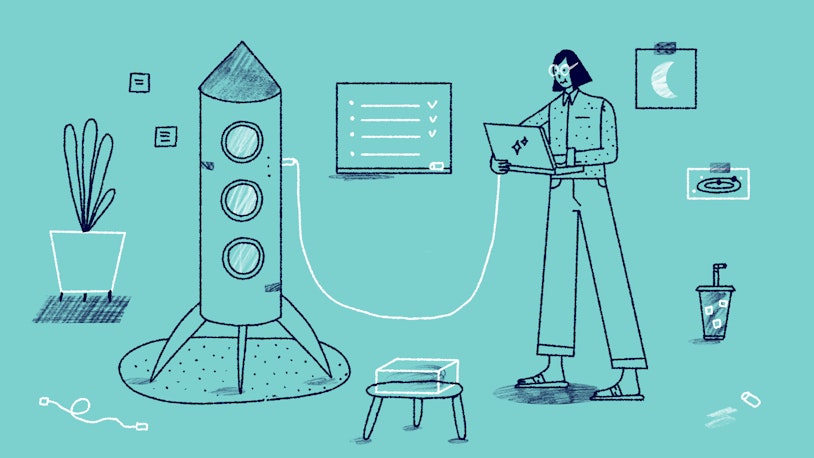If you stop to think about it, the term “customer lifecycle” is a little misleading.
For one, the “customer” part implies that the lifecycle starts when someone officially purchases a product from you. But in truth, the customer lifecycle begins before your customer ever hears about your company.
The “life” part of lifecycle implies that there’ll be an end to the customer's time with your business, but that's the opposite of what we're going for when we talk about customer lifecycle management.
By managing each stage of the customer lifecycle well, you’re building a relationship so full of value for the customer that they’ll not only stick around long term, they’ll also be so happy with their experience that they’ll become an advocate for your company.
The customer lifecycle explained
Customer lifecycle refers to the entire process a customer takes with your company, from first hearing about your business, to purchasing a product and using it, all the way through to becoming a brand advocate.
This might sound a bit like the customer journey, but there’s a key difference: perspective.
When a company lays out all of the steps in their customer journey (usually through a visual aid called a customer journey map), they’re viewing the journey through the customer’s eyes. They’re asking: What does the customer experience at each stage in the journey? What touchpoints do they have with our brand or product?
In contrast, when a company works through the stages of the customer lifecycle, they’re doing so from a business perspective. They’re asking: What do we need to do as a business to successfully acquire and retain this customer’s business?
Think of the customer lifecycle as a story. Each chapter represents a different stage in your customer's experience with your business. It's not just about making a sale — it's about crafting a narrative that fosters long-term relationships that go far beyond any particular transaction.
Customer lifecycle marketing explained
In the customer lifecycle, every interaction matters, from the first hello to the never-ending “How can we help you?” But each stage in the customer lifecycle requires its own unique engagement strategy in order for those interactions to be relevant and impactful.
For instance, you wouldn’t want to send a product feedback survey to a customer who’s still researching their product options — it would likely confuse them and make them feel as though you were rushing them into making a decision.
Customer lifecycle marketing is the art and science of giving customers the information and encouragement they need at each stage. It’s about influencing customers based on where they’re at today and where you want them to progress to over time.
The 5 (or 6) customer lifecycle stages
Most companies will tell you that there are five stages in the customer lifecycle: reach, acquisition, conversion, retention, and advocacy. Here at Help Scout, we also understand how important it is to set up customers for success, so we sometimes add a sixth step — onboarding — in the middle of the lifecycle.
But whether you count five or six total stages in the customer lifecycle, each part plays a pivotal role in driving success for your business, so we’re going to take a deep dive into each one.
We’ll start out by defining each stage so you understand how it contributes to the customer experience and business success. Then we’ll move into exploring some strategies and tactics for analyzing and managing the stage so that you can help the customer through it.
Finally, we’ll discuss the different marketing tactics and channels used for each stage so you can be equipped to engage with your customers throughout the customer lifecycle.
Let’s begin!
The reach stage
The first stage of the customer lifecycle is called the reach stage, but it’s also sometimes referred to as the awareness or the exploration stage.
In this stage, a potential customer either knows they have a need and they're beginning to research solutions or they come across your business organically and begin to consider whether your product could solve a problem or need they didn’t realize they had.
Your goals in this stage are threefold:
Build brand awareness and recognition. You want to stand out as the company who can provide the definitive solution to the customer’s problem.
Make a good first impression. You want a customer’s first interaction with your brand to set a positive tone for the rest of their interactions with you.
Provide a path to more information. This initial contact doesn’t need to answer every question possible, but it should make it easy for the customer to know where they need to go to get more information and make a decision.
Lifecycle marketing for the reach stage
A targeted reach marketing strategy leads to a larger pool of well-matched potential customers. The more leads in your pipeline, the more chances you’ll have to turn prospects into paying customers.
Your lifecycle marketing strategy in this stage could include any or all of the following:
Ads in trade publications and magazines.
Billboards and other advertising in malls, airports, and other public places your customers frequent.
Social media marketing through targeted ads, influencer partnerships, and an active brand social media account.
Search engine marketing through well-placed ads.
Search engine optimization through publishing and distributing high-quality content.
Referrals from existing customers.
Booths or staff at relevant conferences and networking events.
As an example, I’m currently in the final throes of National Novel Writing Month. In one month, I’m aiming to write a very rough draft of a novel, which is bound to need substantial editing.
AutoCrit, an automated text feedback tool, accurately identified me as a potential customer, so I got this ad on Facebook, which I find both useful and eye-catching:
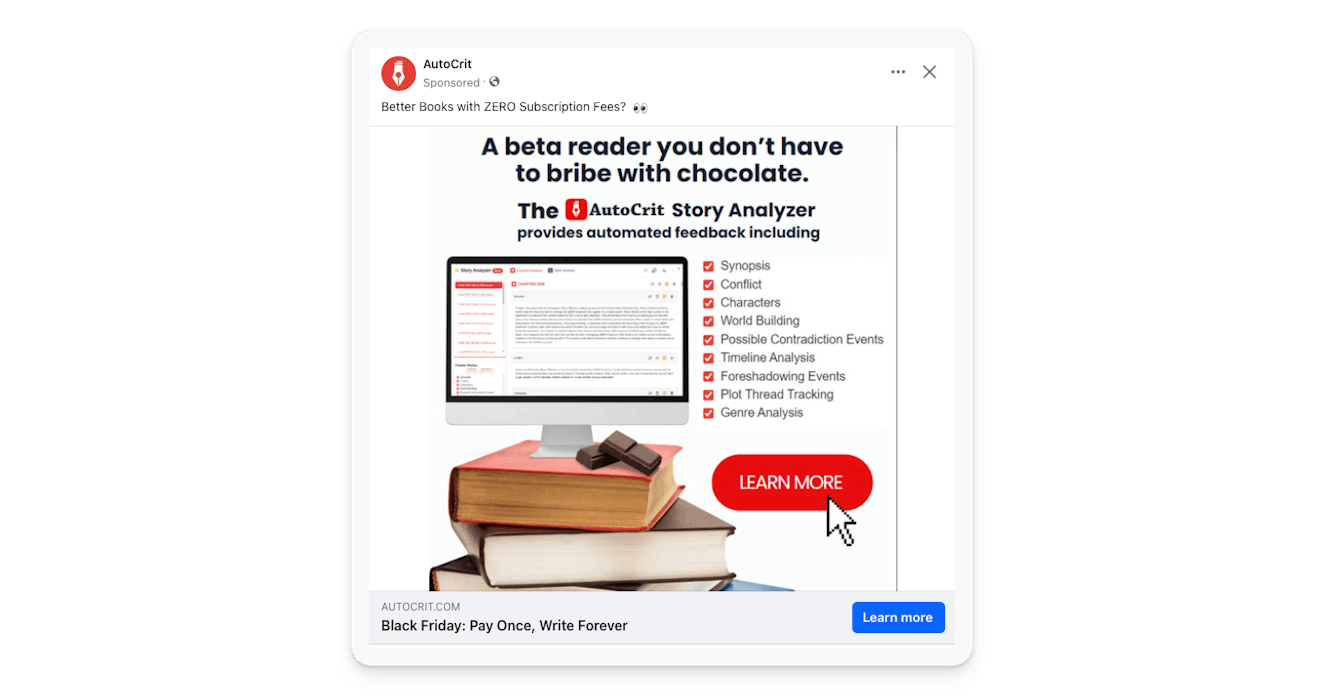
Analyzing the reach stage
There are a few ways you can monitor the success of the reach stage. You could track impressions on social media, traffic to your website (direct and referred), new leads generated, and more.
You can also compare the amount you’ve spent on placing ads, partnerships, conference booths, and so on. Comparing this to the amount of revenue brought in allows you to calculate your return on ad spend (ROAS).
Finally — although this blends into the next stage of the lifecycle — you can also survey customers directly after they’ve completed a purchase. How did they hear about your company? What was their first impression? Why did they choose you versus your competitors?
The acquisition stage
You might see this stage also referred to as the engagement, consideration, or act stage.
In the acquisition stage, a customer makes some kind of contact with your company, perhaps through visiting your website, asking your support or sales team questions about your product, scheduling a demo, or starting a free trial.
This is a promising stage, because your customer is transitioning from having a passive interest to showing active engagement in your product. This is your opportunity to:
Build trust and credibility. Make it easy to find product information and pricing on your website, and ensure that it’s helpful, accurate, and actionable. This helps your customer make an informed decision. Consider putting together case studies or write blog posts on common use cases so that customers can picture themselves using your product. Touches like these highlight your brand as reliable and customer-centric.
Learn more about their needs and offer personalized solutions. If they’re talking to your support or sales team, coach those teams to be curious about the customer’s needs and to make personal recommendations for meeting those needs. Kind, easy, human connections like these are often the differentiating factor for customers when they’re considering multiple options.
Follow up with personalized outreach (but don’t spam). Send high-quality resources, let them know if they forgot something in their cart, or send a follow-up email to make sure they got the help they needed. Most customers appreciate thoughtful check-ins, but overly frequent or low-quality contacts will likely leave a bad impression, so be tactical in your communications.
As an example of high-quality, personalized outreach, I received this one while I was still homeschooling my elementary-aged kids:
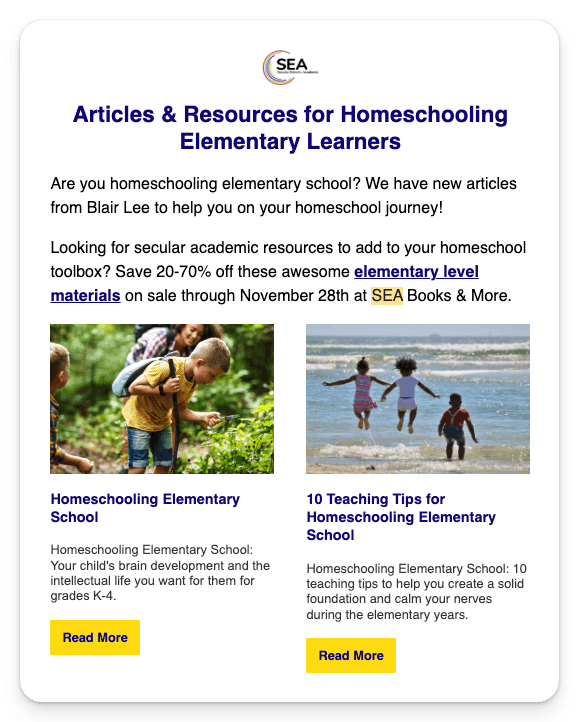
Not only does the newsletter contain valuable information about homeschooling, it also highlights discounted materials, so the value of the newsletter is demonstrated on a few levels.
Lifecycle marketing for the acquisition stage
Your marketing strategy for this stage will likely involve a combination of channels:
Your website, store, or blog and any customer contact forms.
Live chat widgets and social media (including direct messaging).
Email, both inbound and outbound.
Phone support.
You’ve driven a lot of potential interest in the reach stage, and now in the acquisition stage you’re moving customers forward toward making a purchase.
Analyzing the acquisition stage
Understanding how you’re performing in the acquisition stage often requires a little work and is dependent on your marketing channels. You can track metrics like email engagement rates, support and sales inquiries, and the volume of sales leads moving through this stage.
You can also measure overall engagement in this stage by looking at hits to your blog and product pages and tracking your social media engagement metrics, like follower count, comment volume, content shares, and so on.
The conversion stage
Also sometimes referred to as the purchase stage, this is just that! It’s the moment a potential customer becomes an actual customer by buying a product or service from your company.
The benefit to business objectives in this stage is clear — every purchase means more revenue. But it might be less clear why the customer experience is so important at this stage.
Providing an easy and smooth purchase process demonstrates your respect for customers’ time and signals to the customer that purchasing your product was a good decision. It also lays the groundwork for future purchases, since they'll know how easy it is to get access to the thing they need.
Lifecycle marketing for the conversion stage
This stage is a good time to make live chat or phone support extremely accessible. When a customer is on the verge of buying your product, you want to make it easy for them to get instant answers to any questions that might prevent them from hitting that button to complete the transaction.
You’ll also want to try to anticipate questions the customer might have at this point. These might be questions like:
How do they get started with their new software?
When can they expect their order to arrive, and how do they track it?
What do they do if something is broken in the app or the product is the wrong size?
If the product is a bad fit, what kind of return or refund policy do you offer?
Consider providing answers to these questions on your sales page, in an order confirmation email, or through a pop-up widget offering help resources. Proactively answering these questions reinforces that new customers can expect a good support experience from your company. They also help to transition the customer to the next stage more seamlessly.
Lastly, thank the customer for their purchase! I have a couple of recurring subscriptions with Copper Cow Coffee, and after every order I get a sweet and helpful thank-you note from them:

Analyzing the conversion stage
We’ve already mentioned some helpful metrics and data to look at when trying to assess success in this stage, but two are particularly important: conversion rate and customer acquisition cost (CAC).
If you’re a SaaS company, your conversion rate might be the percentage of deals your sales team closes. If you use a freemium model, it might be the percentage of free trials that convert to paid accounts.
However you measure it, increasing your conversion rates is an ongoing process of testing, iterating, and measuring the results.
The basic formula is:
CAC = marketing + sales costs / number of new customers acquired
Tracking your CAC will help you understand the financial health of your business. If it costs you $100 to acquire a new customer, you need to make sure that the lifetime value of those customers is more than that.
The onboarding stage
Companies that include this stage in their customer lifecycle sometimes call it the customer success or implementation stage.
This is the stage in which you make sure your customer knows how to use and get the most out of the product they purchased from you. Software and technology companies are very likely to include this stage in their customer lifecycles, while ecommerce companies are less likely to include it.
Lifecycle marketing for the onboarding stage
Customer onboarding is key in many situations, especially if your business relies on a subscription model with recurring income. Since a customer's understanding of how to use your product effectively directly impacts the value they receive, without proper onboarding, you’re more likely to get unsatisfied customers and increased customer churn.
Giving new customers the tools to use what they've purchased increases their confidence and decreases uncertainty, both of which makes retaining them down the road much easier. Lifecycle marketing in the onboarding stage often involves resources like onboarding email sequences, digital courses or webinars, or step-by-step guides.
For example, Astrohaus, the makers of the distraction-free e-typewriter I recently purchased, sent me this super helpful onboarding email after I connected my device to their content management system for the first time:

Freewrite devices are very specialized and have something of a learning curve, so this was a welcome email in my inbox. In addition to confirming the first sync was successful, it explained some key features of the product (writing under a time goal and using markdown to format my writing after it’s been synced). It also anticipated some questions I had, like how to change the font size and my keyboard language.
Analyzing the onboarding stage
Measuring the success of your onboarding stage will depend heavily on your product and your customers. When I worked at a project management company, one of the ways we measured the success of our onboarding process was how many features of the product a customer used during their first week on the platform.
For instance, we tracked whether they created a certain number of projects and stories, whether they invited a minimum number of team members, whether they customized their workflow states, and so on.
If a customer didn’t successfully hit those milestones, we considered them at risk, and this would trigger a follow-up with their customer success representative to help them get back on track.
You can also measure things like engagement with the various resources you’ve created (like an email sequence) and the number of customers who cancel within the first 90 days.
The retention stage
In the retention stage, you're focused on keeping your customers engaged and satisfied with their purchase and with your company.
Some companies will also consider the opportunity for expansion to be a part of this stage, because if your customer can see the value of a product they've already purchased, you can likely make a case that your other products will be a good fit for them as well.
Lifecycle marketing for the retention stage
It's important to highlight here that customer retention isn't just about keeping them from leaving — it's about actively enhancing their experience so that they’re enthusiastic about staying a customer.
This means that you'll want to build and nurture a relationship with your customers by:
Providing stellar customer service and self-help resources.
Seeking their feedback and advice and making improvements so that they become your partner in the product.
Keeping them updated on new features and products.
Continuing to offer personalized recommendations and discounts for new products or subscription upgrades that would be a good fit.
Trying to bring back churned customers by offering special discounts for returning.
reMarkable, for instance, is skilled at keeping me engaged with their brand by sending me notifications whenever a major firmware update is released for my writing tablet:
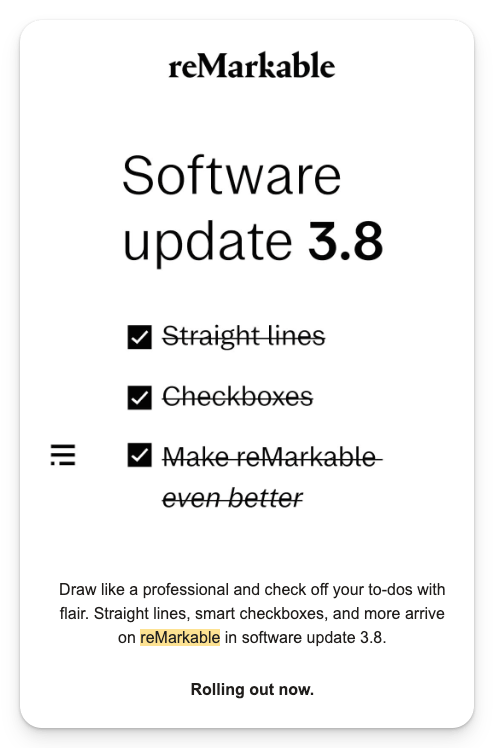
And Speechify, which I canceled a while back, has consistently sent me reasonable outreach emails with tempting discounts if I resubscribe:

Analyzing the retention stage
The retention stage is the best time to calculate customer lifetime value (CLV). Here’s the basic formula:
CLV = customer spend per year x customer lifespan in years
Knowing the CLV for customers is vital to understanding whether your related strategies make sound business sense.
This is also a good stage for tracking renewal rates, customer sentiment, and customer satisfaction.
The advocacy stage
Also sometimes referred to as the loyalty stage, this is the stage in which you help your customers become power users who drive additional growth for your business. Many customers may not make it to this stage, but those who do become multipliers for every other stage in the customer lifecycle.
They amplify your reach through word-of-mouth advertisement. They become expert users who can serve as informal advisors to new and existing users, which additionally improves your onboarding, retention, and expansion. Their advocacy is a testament to the worthiness of your product, thus boosting your company's success.
Lifecycle marketing for the advocacy stage
You can nurture and reward these users by:
Giving them access to special programs and perks like discounts, referral programs, and VIP events.
Inviting them to closed beta programs or to be the first batch of users who get access to new features and products.
Inviting them to closed user communities or to become guides and resident experts in open user communities.
Recognize them with badges and awards that celebrate their milestones with your product.
Starbucks recently rolled out a beta program called Odyssey, and because I’ve bought, erm, perhaps more than my fair share of coffee from them, I also have access to premium benefits:

Analyzing the advocacy stage
The benefit of many of these advocacy stage efforts is that you can see their direct effects on your revenue. Referral and affiliate programs both bring clear revenue streams that you can trace back to specific power users and campaigns, giving you more insight into which strategies work and which don’t.
This is also a natural stage in which to track metrics like Net Promoter Score and referral-driven revenue.
From disjointed to seamless experiences — the customer lifecycle brings it all together
We've looked in depth at the whole customer lifecycle, exploring each stage — reach, acquisition, conversion, onboarding, retention, and advocacy — and uncovering their unique contributions to both customer experience and business success.
Understanding and effectively managing the customer lifecycle is more than just a business strategy — it's a holistic approach to building lasting relationships. It’s about creating a seamless experience that meets and exceeds customer expectations, fostering a lasting sense of trust and brand loyalty.
Creating a strategic plan for managing each stage of the customer lifecycle translates into tangible business growth. As you get started, just remember that the customer lifecycle is always evolving. Stay adaptable, be receptive to feedback, and keep aiming to build a better customer experience.


